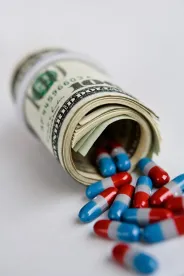Sequenom, Inc. has filed a petition for rehearing en banc of the Federal Circuit decision that held its diagnostic method claims invalid under 35 USC § 101. (You can read my synopsis of that decision here). Stakeholders in the diagnostic and personalized medicine space will be watching to see if the court grants the petition and reaches a different decision on the merits.
The Question For En Banc Review
The petition asserts that the case “raises the following precedent-setting question of exceptional importance:
Is a novel method patent-eligible under §101 where: (1) a researcher is the first to discover a natural phenomenon; (2) that unique knowledge motivates her to apply a new combination of previously known techniques to the phenomenon; and (3) she thereby achieves a previously unknown and impossible result?
The petition summarizes the panel decision as holding that “the person who first discovers a natural phenomenon can never obtain a patent on any practical application of that new knowledge, however surprising or revolutionary the results, unless the steps she teaches to use it are independently novel,” and asserts that it “cannot be correct.”
The Contrary Precedent
The petition asserts that the panel decision is contrary to the following Supreme Court decisions:
-
Diamond v. Diehr, 450 U.S. 175 (1981), because the “Court held that a new combination of steps leading to a new practical result is eligible for a patent even if the individual steps were known beforehand and the core of the invention is an unpatentable natural law or formula.”
-
Mayo v. Prometheus Laboratories, 132 S. Ct. 1289 (2012), because it reaffirmed the principles of Diehr.
-
Association for Molecular Pathology v. Myriad Genetics, 133 S. Ct. 2107 (2013), because the Court stated that “Myriad was in an excellent position to claim applications of that knowledge” of BRCA genes associated with breast cancer.
According to the petition, the natural phenomenon the Sequenom inventors discovered “motivated them to teach a new method that no one was practicing, and whose combined steps were in fact the opposite of the ‘conventional’ approach [which discarded the serum sample at issue], even if each individual technique involved was ‘well-understood’ on its own.”
Dire Consequences For Medical Inventions
The petition emphasizes the far-reaching and “dire consequences” of the panel decision, asserting that even methods of treatment are not safe from its holding:
Mayo clearly suggested that “a new way of using an existing drug” would be eligible for patent protection under §101. …. But under the panel’s test, that cannot be true: The drug is known, the means of administering it are known, and the only new insight is the (unpatentable) natural law that the drug treats a disease no one previously knew it treated.
The petition explains that under Diehr, methods of treatment are patentable because they involve “non-routine and non-conventional uses of known techniques to accomplish new results that are motivated by an insight about the natural world.” In contrast, the petition alleges, the panel decision would invalidate patents to such important methods as methods of vaccinating against Ebola virus and methods of diagnosing cancer.
The petition argues that, instead of promoting freer access to “fundamental discoveries” the fall-out from the panel decision will be to encourage inventors to keep their discoveries secret and to discourage investment.
The petition concludes by urging the full Federal Circuit to “take this opportunity to protect patent law’s fundamental principles from being eroded by results neither the Supreme Court nor Congress could possibly have intended.”
Will The Federal Circuit Grant Rehearing En Banc?
The Federal Circuit denies far more petitions for rehearing en banc than it grants, but if the court understands the significance of this case–and the potential implications of the panel decision–it might be willing to take another look, and perhaps decide that the Sequenom claims fall on the Diehr side of the patent eligibility divide.




 />i
/>i
